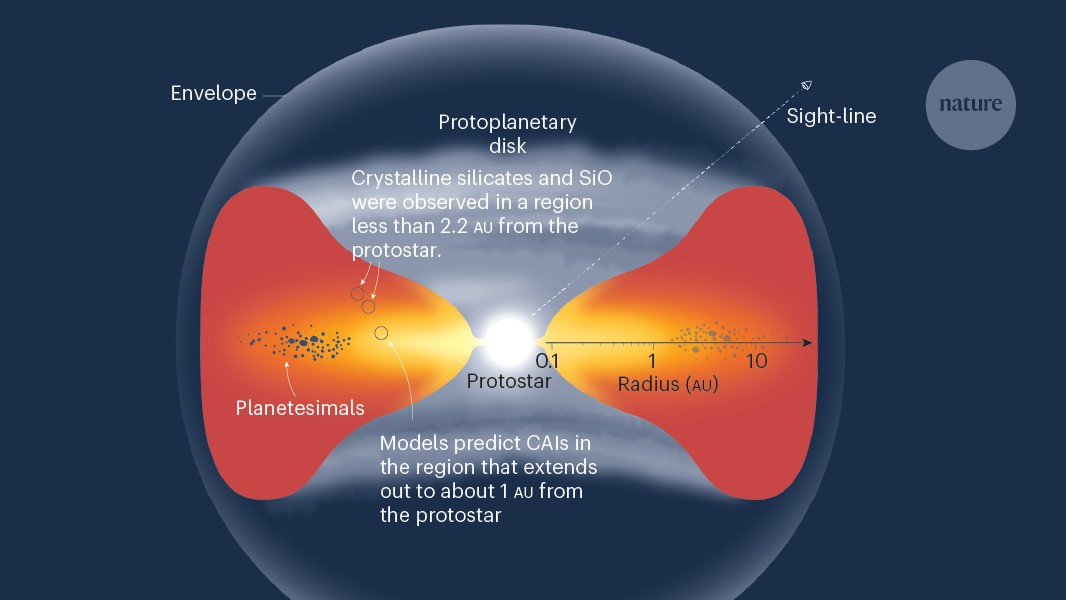The Solar System was born more than 4.5 billion years ago from a cloud of dust and gas that collapsed under its own gravity. This created a young star, the Sun, surrounded by a rotating halo of material called the solar nebula. Minerals, metals and other compounds formed in this nebula, eventually clumping into larger objects that became the planets. Meteorites provide clues about the formation of the Solar System, but debate remains about the early evolution of the solar nebula. Writing in Nature, McClure et al. report observations of a planetary system in the early stages of formation that has similar properties to the very early Solar System1. This is the first time that astronomers have been able to see details of the inner structure of such a system. This provides an opportunity to study how planetary systems such as ours were shaped in the first stages of their existence.
Competing Interests
The author declares no competing interests.


